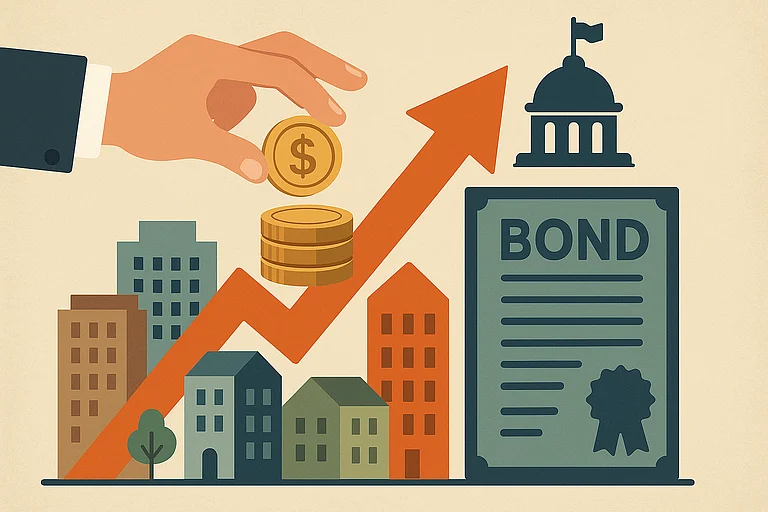The Reserve Bank of India’s Monetary Policy Committee (MPC) on Friday decided to keep the repo rate unchanged with a majority of 4:2 for the 11th consecutive meeting. Announcing the repo rate, RBI governor Shaktikanta Das cited corners over inflation and the uncertain growth outlook as driving factors behind keeping the key lending rate unchanged.
RBI kept the repo rate unchanged to continue with the neutral stance of the policy and to monitor the outlook on inflation and growth. “Monetary policy is important because it affects the lives of people, economy, big corporates, middle class, farmers. It has a wide-ranging impact on the economy,” Das said.
Additionally, the RBI has also cut the cash reserve ratio (CRR) by 50 basis points to 4 per cent. Says Arsh Mogre, Economist Institutional Equities, PL Capital - Prabhudas Lilladher, “The RBI’s December MPC decision reflects a delicate balancing act between addressing domestic liquidity challenges and managing external vulnerabilities. By maintaining the repo rate at 6.5 per cent and implementing a 50 bps CRR cut to 4 per cent, the central bank has infused Rs 1.16 lakh crore into the banking system, directly targeting the acute liquidity deficit caused by rupee depreciation and capital outflows. This demonstrates a tactical response to near-term pressures without prematurely altering the broader monetary stance."
Adds Madhavi Arora, Lead Economist, Emkay Global Financial Services, "Policy tradeoffs have become even more perplexing with the emerging cracks in the domestic story with the economy stuck in a stagflationary state. And given the challenges around timing and window of conventional rate cuts, and FX cost of rate cuts (liquidity implication/sterilization cost, and imported inflation amidst fluid global dynamics), a CRR cut of 50bp was the least costly measure for them."
"And given the challenges around timing and window of conventional rate cuts, and FX cost of rate cuts (liquidity implication/sterilization cost, and imported inflation amidst fluid global dynamics), a CRR cut of 50bp was the least costly measure for them," Arora says.
Says Raghvendra Nath, MD, Ladderup Wealth Management, "A cut in the CRR by 50 basis points is expected to enhance liquidity in the banking system and support credit growth."
Adds Vivek Iyer, Partner, Grant Thornton Bharat, "The move in my view is a right signal that is being sent to the market that the RBI will not keep its eye off inflation but at the same time it doesn’t want to compromise growth. It’s a tightrope walk that RBI is deftly undertaking."
"Investors should put fixed deposits for a period of 4 months to 6 months as the interest rate is expected to remain the same for the same period. Inflation risks not only need to go down but to remain at those levels sustainably for the RBI to consider rate reduction and an accommodative stance and this will atleast take 4 to 6 months," Iyer suggests.
On the gross domestic product growth front, the central bank has projected India's GDP growth in the financial year 2025 to be 6.6 per cent. The third-quarter (Q3) forecast is 6.8 per cent, while the fourth-quarter (Q4) forecast is 7.2 per cent. RBI governor says indicators suggesting a slowdown in the economy in Q2 have bottomed out.
The RBI has revised this GDP growth forecast for FY24 down from 7.2 per cent (as projected earlier). "In light of the recent rise in inflation and sluggish GDP growth in Q2, RBI Governor has emphasised the importance of a flexible approach to targeting inflation while balancing growth," Nath states.
Further, RBI has projected inflation to be 4.8 per cent in the financial year 2024-25. The Q3 forecast for inflation is 5.7 per cent and the fourth-quarter forecast is 4.5 per cent.
“The last mile of global disinflation is turning out to be prolonged,” the RBI Governor said in his address.
Das further noted that the RBI’s hawkish outlook on inflation was due to persistently high food inflation, which is yet to stabilise. However, the optimism is upbeat on India’s growth outlook, supported by good monsoons and the expected revival of capital expenditure.
Adding to this Nath says, "Moving forward, we anticipate that supporting growth will become a priority, provided there are no significant negative shocks to inflation. Considering all these factors, we believe that the RBI will initiate a rate cut cycle starting in February 2025."
The announcement comes at a time when the country’s inflation surged to 6.2 per cent in October 2024, breaching the RBI's tolerance limit, and GDP growth slowed down to 5.4 per cent for the July-September quarter.
This may be the final MPC with Governor Shaktikanta Das at the helm as his term ends this month. However, it is not known if Das will continue in office or not given, he got an extension in 2021 after being appointed in December 2018.
Key Takeaways From Today's Announcement
"Governor Das’s acknowledgment of the ‘prolonged last mile of disinflation’ underscores that policy normalization will be data-dependent and gradual," Mogre states.
"This policy balances the fine line between growth revival and inflation control. The policy moves are clear but cautious—indicating readiness for incremental easing from February 2025, provided inflationary pressures abate and external conditions stabilize. This measured approach underscores the RBI’s focus on preserving economic stability while navigating an increasingly uncertain global landscape," he further states.
Says Arora, "CRR reversal to pre-Covid 4 per cent level implies an infusion of Rs 1.2 trillion at a time when core liquidity may steadily move to a deficit ahead with unsterilized FX intervention and CIC leakages. More importantly, this liquidity infusion could lead to better and immediate transmission of cuts as and when the RBI commences the (shallow) cut cycle amid the limited window. Had there been no policy support, the system liquidity deficit would likely have crossed Rs3-3.5tn by end-Mar'25 as per our estimates."
"Going ahead, while rate cuts would still be a tricky call, we also keep a watch on unconventional measures, specifically, easing regulatory lending norms gradually ahead in order to re-spur waning credit offtake," she notes.
Iyer states, "The RBI won’t cut rates in February and what will happen after that needs to be seen. Hence it’s better to keep the FDs for 4 to 6 months as the inflation risks are too high."














